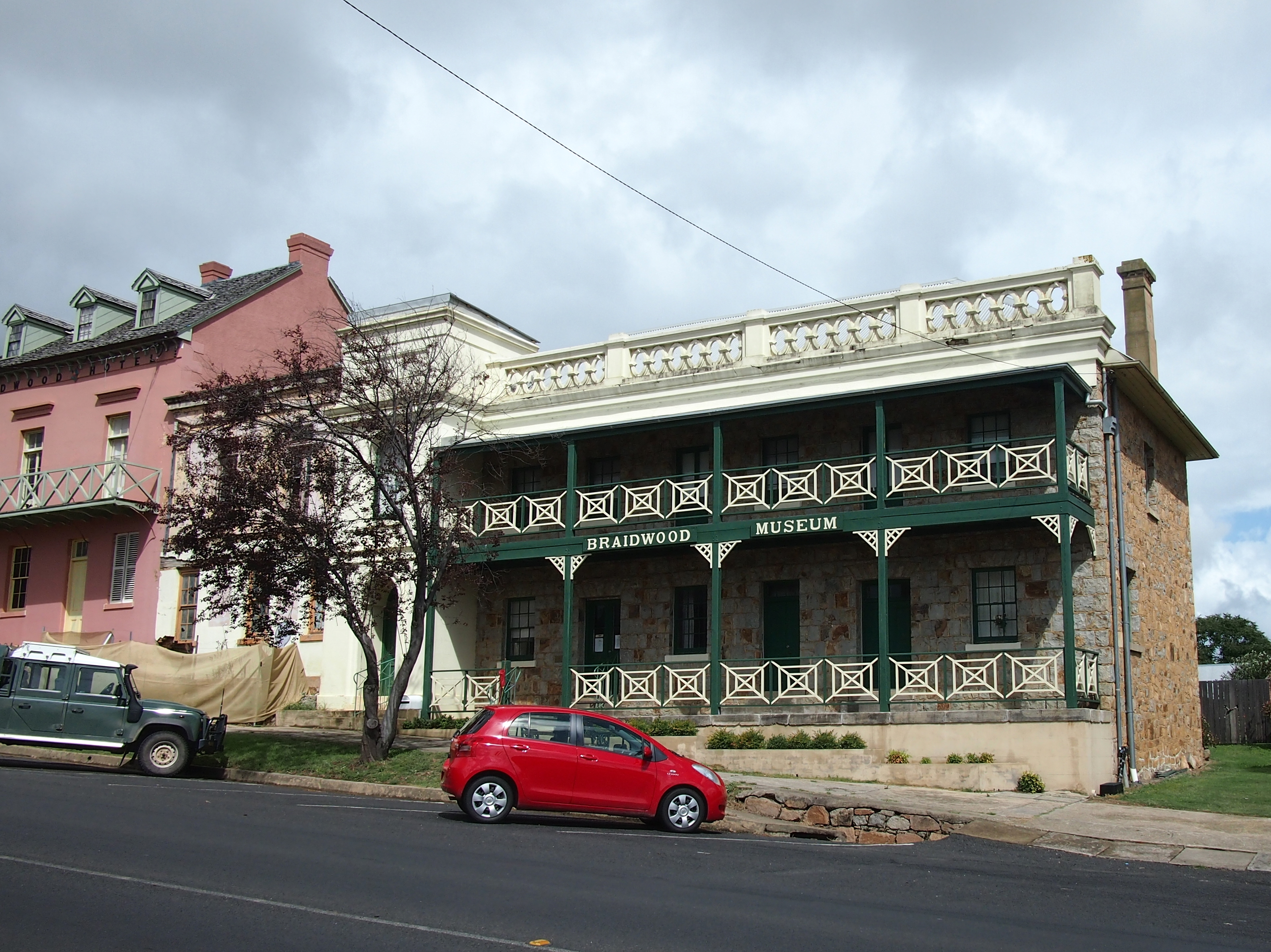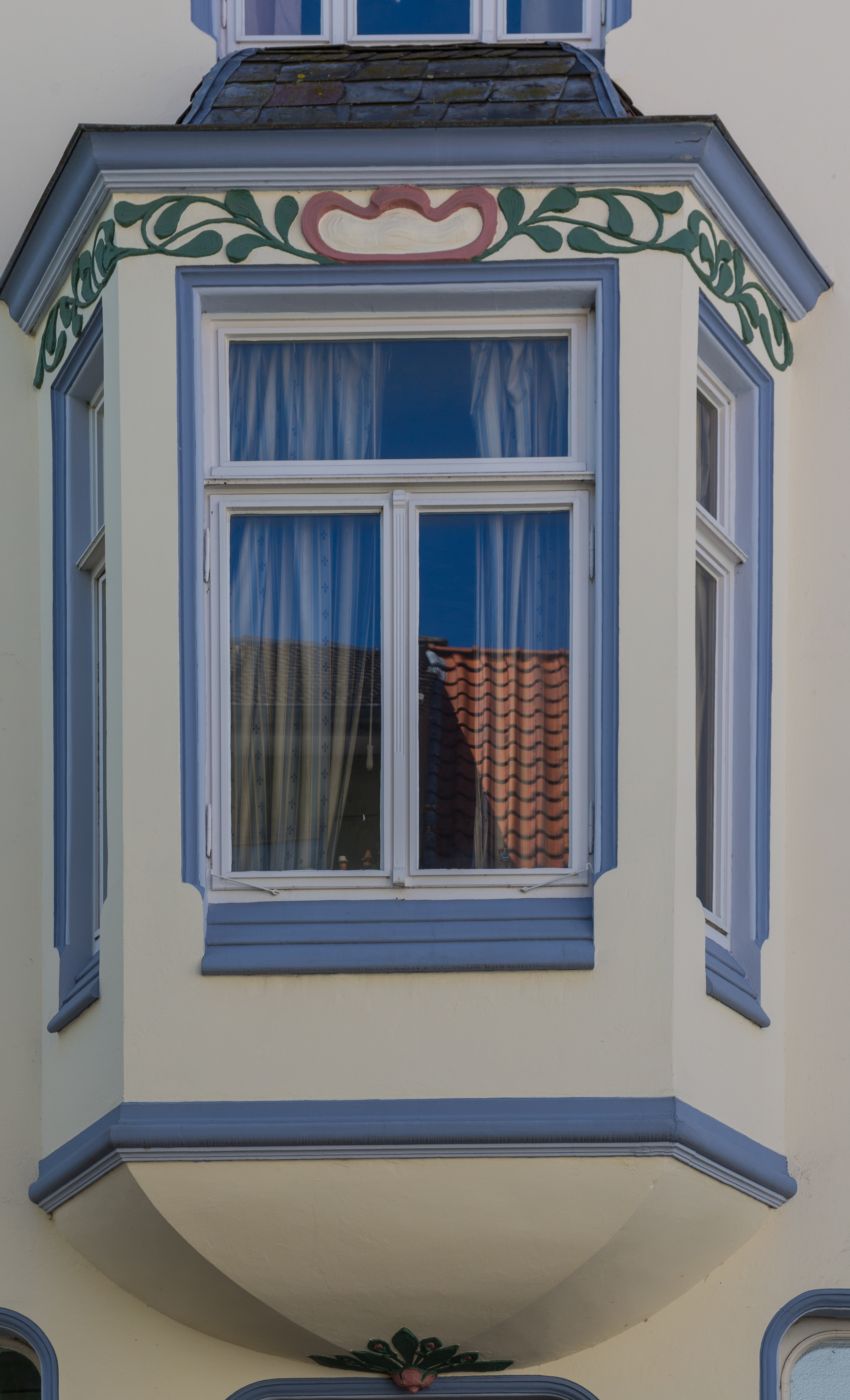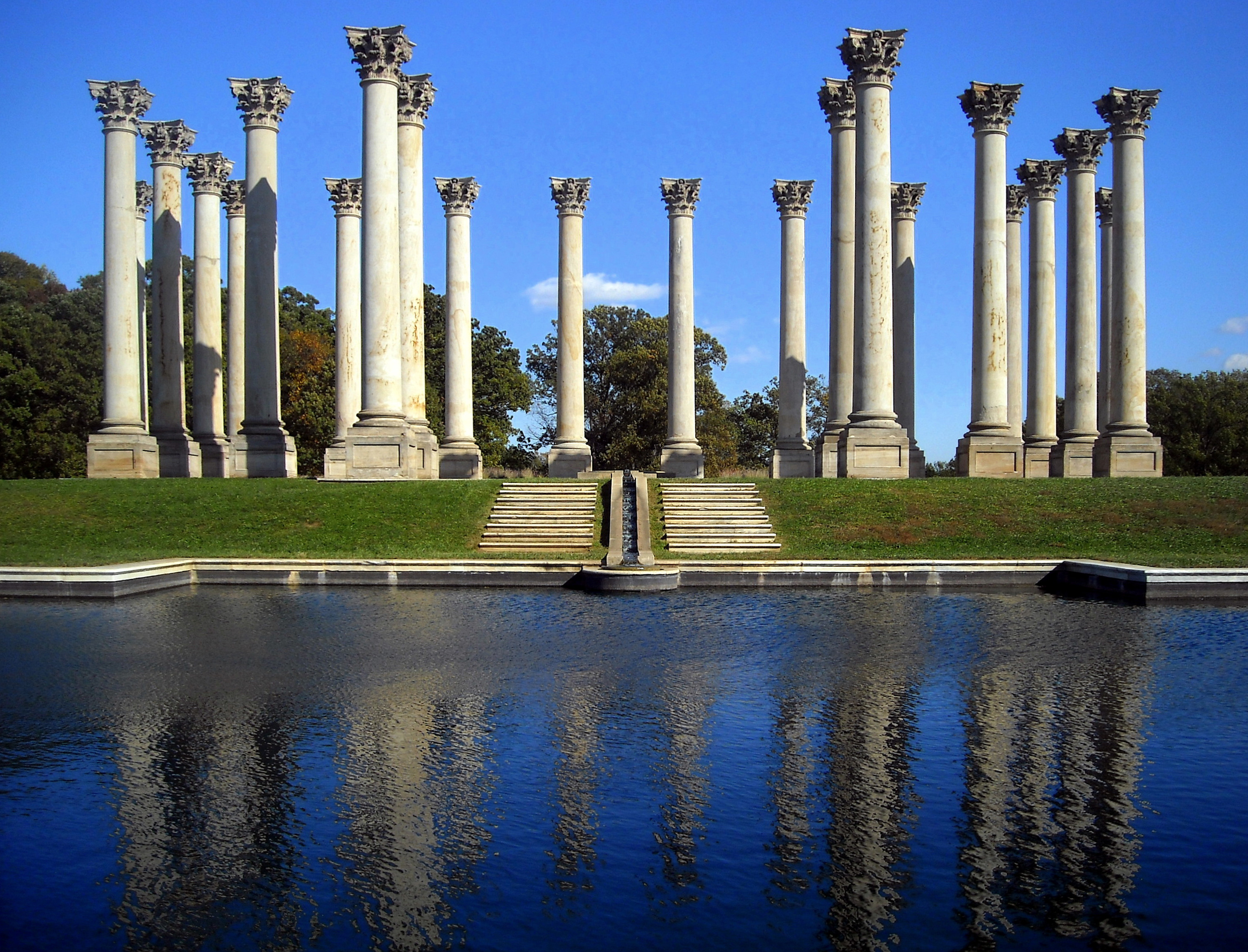|
Bedervale
Bedervale is a heritage-listed colonial homestead in Braidwood, New South Wales, Australia. The house was designed by John Verge and was completed in 1842. Bedervale is owned privately and the homestead's contents were purchased by the National Trust of Australia (NSW) to maintain the interior collection. The garden is also historically significant as it contains many plantings dating from the 19th century and the orchard contains older varieties of fruit trees. There is also a cemetery on the estate which has historical importance. The homestead was added to the New South Wales State Heritage Register on 2 April 1999. History John and Jane Coghill John Coghill was born in 1785 at Wick in Scotland. In 1814 he married Jane Grean who was born in Lisbon in 1797. She was the daughter of Francis and Jane Grean. At the time of their marriage he was 29 and she was only 17. In 1820 he became Captain of the convict ship "Mangles" of which he was part owner. He made four voyages betwee ... [...More Info...] [...Related Items...] OR: [Wikipedia] [Google] [Baidu] |
John Verge
John Verge (1782–1861) was an English architect, builder, pioneer settler in the Colony of New South Wales, who migrated to Australia and pursued his career there. Verge was one of the earliest and the most important architect of the Greek Revival in Australia. He also brought more comprehensive range of Regency style than any contemporary architects. His design indicates the increasing of sophistication compared to previous architect's design. Life and career John Verge was born in Christchurch, Hampshire. Many generations of the Verge family had been bricklayers and stonemasons. Verge married to Catherine Bowles at the age of twenty-two and went to London. From 1804 to 1828, he worked in London in the building trade, becoming a man of means. Verge's marriage eventually failed and, in 1828, he migrated to Sydney, New South Wales, Australia, with his son George Philip, intending to take up a land grant. The first land grant in 1829, he took up land on the Williams River ... [...More Info...] [...Related Items...] OR: [Wikipedia] [Google] [Baidu] |
Braidwood, New South Wales
Braidwood is a town in the Southern Tablelands of New South Wales, Australia, in Queanbeyan–Palerang Regional Council. It is located on the Kings Highway linking Canberra with Batemans Bay. It is approximately 200 kilometres south west of Sydney, 60 kilometres inland from the coast, and 55 kilometres east of Canberra. Braidwood is a service town for the surrounding district which is based on sheep and cattle grazing, and forestry operations. Indigenous History Braidwood is located within the Yuin Nation, on Walbanga Country. The Walbanga People speak dialects of the Thurga (Durga/Dhurga) language. The Walbanga Peoples relied on the plentiful supply of vegetables available in the tablelands, such as the tubers of the yam daisy, wattle-seeds, and orchid tubers. In September to May, fish and crayfish were eaten, while possums and larger grazing animals were hunted year round. The Walbanga People and neighbouring groups made annual trips in December and January from ... [...More Info...] [...Related Items...] OR: [Wikipedia] [Google] [Baidu] |
John Coghill (Australian Politician)
John Coghill (1785–1853) was an Australian politician and naval captain. He was the master of the ship '' Mangles'', which transported convicts to New South Wales ) , nickname = , image_map = New South Wales in Australia.svg , map_caption = Location of New South Wales in AustraliaCoordinates: , subdivision_type = Country , subdivision_name = Australia , established_title = Before federation , es ... from 1820 to 1826. After settling in New South Wales in 1826 he became a magistrate, and was based in Braidwood, where he built the Bedervale homestead. From 1843 to 1845 he was a member of the New South Wales Legislative Council. During 1841, he was in command of the convict road gang that built The Wool Road (New South Wales), The Wool Road. In Braidwood, there is a wall plaque to his memory, in Anglican Church of St Andrew. Coghill Street is named after him. References External links Colonial Secretary's papers 1822-1877 State Library of Queensland- ... [...More Info...] [...Related Items...] OR: [Wikipedia] [Google] [Baidu] |
Veranda
A veranda or verandah is a roofed, open-air gallery or porch, attached to the outside of a building. A veranda is often partly enclosed by a railing and frequently extends across the front and sides of the structure. Although the form ''verandah'' is correct and very common, some authorities prefer the version without an "h" (the ''Concise Oxford English Dictionary'' gives the "h" version as a variant and '' The Guardian Style Guide'' says "veranda not verandah"). Australia's ''Macquarie Dictionary'' prefers ''verandah''. Architecture styles notable for verandas Australia The veranda has featured quite prominently in Australian vernacular architecture and first became widespread in colonial buildings during the 1850s. The Victorian Filigree architecture style is used by residential (particularly terraced houses in Australia and New Zealand) and commercial buildings (particularly hotels) across Australia and features decorative screens of wrought iron, cast iron "lace" ... [...More Info...] [...Related Items...] OR: [Wikipedia] [Google] [Baidu] |
Historic House Museums In New South Wales
History (derived ) is the systematic study and the documentation of the human activity. The time period of event before the invention of writing systems is considered prehistory. "History" is an umbrella term comprising past events as well as the memory, discovery, collection, organization, presentation, and interpretation of these events. Historians seek knowledge of the past using historical sources such as written documents, oral accounts, art and material artifacts, and ecological markers. History is not complete and still has debatable mysteries. History is also an academic discipline which uses narrative to describe, examine, question, and analyze past events, and investigate their patterns of cause and effect. Historians often debate which narrative best explains an event, as well as the significance of different causes and effects. Historians also debate the nature of history as an end in itself, as well as its usefulness to give perspective on the problems of the p ... [...More Info...] [...Related Items...] OR: [Wikipedia] [Google] [Baidu] |
History Of New South Wales
The history of New South Wales refers to the history of the Australian state of New South Wales and the area's preceding Indigenous and British colonial societies. The Mungo Lake remains indicate occupation of parts of the New South Wales area by Indigenous Australians for at least 40,000 years. The English navigator James Cook became the first European to map the coast in 1770 and a First Fleet of British convicts followed to establish a penal colony at Sydney in 1788. The colony established an autonomous Parliamentary democracy from the 1850s and became a state of the Commonwealth of Australia in 1901 following a vote to Federate with the other British colonies of Australia. Through the 20th century, the state was a major destination for an increasingly diverse collection of migrants from many nations. In the 21st century, the state is the most populous in Australia, and its capital, Sydney is a major financial capital and host to international cultural and economic ev ... [...More Info...] [...Related Items...] OR: [Wikipedia] [Google] [Baidu] |
Tallaganda Shire
Tallaganda Shire, was a local government area in New South Wales centered on Braidwood, New South Wales It lasted from colonial times until February 2004, when the local government organisation was absorbed into newly created Palerang Council The Palerang Council was a local government area located in the Southern Tablelands region of New South Wales, Australia. On 12 May 2016 the Minister for Local Government announced dissolution of the Palerang Council with immediate effect. Toge .... In 2000 shortly before its absorption into Palerang Council, the Shire of Tallaganda was described as ''The Shire has a small population, but is in a favorable location within the Sydney, Canberra, Batemans Bay triangle and its population is not going backwards. Unlike almost all of regional Australia, the Shire does not suffer from a lack of visitors. In fact it has a steady flow of visitors every day of the year, providing great opportunities for suitable business ideas. And also unlike ... [...More Info...] [...Related Items...] OR: [Wikipedia] [Google] [Baidu] |
Araucaria Bidwillii
''Araucaria bidwillii'', commonly known as the bunya pine and sometimes referred to as the false monkey puzzle tree, is a large evergreen coniferous tree in the plant family Araucariaceae. It is found naturally in south-east Queensland Australia and two small disjunct populations in north eastern Queensland's World Heritage listed Wet Tropics. There are many old planted specimens in New South Wales, and around the Perth, Western Australia metropolitan area. They can grow up to . The tallest presently living is one in Bunya Mountains National Park, Queensland which was reported by Robert Van Pelt in January 2003 to be in height. The bunya pine is the last surviving species of the Section ''Bunya'' of the genus ''Araucaria''. This section was diverse and widespread during the Mesozoic with some species having cone morphology similar to ''A. bidwillii'', which appeared during the Jurassic. Fossils of Section ''Bunya'' are found in South America and Europe. The scientific name ... [...More Info...] [...Related Items...] OR: [Wikipedia] [Google] [Baidu] |
Bay Window
A bay window is a window space projecting outward from the main walls of a building and forming a bay in a room. Types Bay window is a generic term for all protruding window constructions, regardless of whether they are curved or angular, or run over one or multiple storeys. In plan, the most frequently used shapes are isosceles trapezoid (which may be referred to as a ''canted bay window'') and rectangle. But other polygonal shapes with more than two corners are also common as are curved shapes. If a bay window is curved it may alternatively be called '' bow window.'' Bay windows in a triangular shape with just one corner exist but are relatively rare. A bay window supported by a corbel, bracket or similar is called an oriel window. "Rawashin" is a traditional and distinctive style of corbelled bay window in Jeddah, Saudi Arabia (e.g., as on the frontage of Nasseef House). Uses Most medieval bay windows and up to the Baroque era are oriel windows. They frequently ap ... [...More Info...] [...Related Items...] OR: [Wikipedia] [Google] [Baidu] |
Chimneys
A chimney is an architectural ventilation structure made of masonry, clay or metal that isolates hot toxic exhaust gases or smoke produced by a boiler, stove, furnace, incinerator, or fireplace from human living areas. Chimneys are typically vertical, or as near as possible to vertical, to ensure that the gases flow smoothly, drawing air into the combustion in what is known as the stack, or chimney effect. The space inside a chimney is called the '' flue''. Chimneys are adjacent to large industrial refineries, fossil fuel combustion facilities or part of buildings, steam locomotives and ships. In the United States, the term '' smokestack industry'' refers to the environmental impacts of burning fossil fuels by industrial society, including the electric industry during its earliest history. The term ''smokestack'' (colloquially, ''stack'') is also used when referring to locomotive chimneys or ship chimneys, and the term ''funnel'' can also be used. The height of ... [...More Info...] [...Related Items...] OR: [Wikipedia] [Google] [Baidu] |
Courtyard
A courtyard or court is a circumscribed area, often surrounded by a building or complex, that is open to the sky. Courtyards are common elements in both Western and Eastern building patterns and have been used by both ancient and contemporary architects as a typical and traditional building feature. Such spaces in inns and public buildings were often the primary meeting places for some purposes, leading to the other meanings of court. Both of the words ''court'' and ''yard'' derive from the same root, meaning an enclosed space. See yard and garden for the relation of this set of words. In universities courtyards are often known as quadrangles. Historic use Courtyards—private open spaces surrounded by walls or buildings—have been in use in residential architecture for almost as long as people have lived in constructed dwellings. The courtyard house makes its first appearance ca. 6400–6000 BC (calibrated), in the Neolithic Yarmukian site at Sha'ar HaGolan, i ... [...More Info...] [...Related Items...] OR: [Wikipedia] [Google] [Baidu] |
Columns
A column or pillar in architecture and structural engineering is a structural element that transmits, through compression, the weight of the structure above to other structural elements below. In other words, a column is a compression member. The term ''column'' applies especially to a large round support (the shaft of the column) with a capital and a base or pedestal, which is made of stone, or appearing to be so. A small wooden or metal support is typically called a '' post''. Supports with a rectangular or other non-round section are usually called '' piers''. For the purpose of wind or earthquake engineering, columns may be designed to resist lateral forces. Other compression members are often termed "columns" because of the similar stress conditions. Columns are frequently used to support beams or arches on which the upper parts of walls or ceilings rest. In architecture, "column" refers to such a structural element that also has certain proportional and decorativ ... [...More Info...] [...Related Items...] OR: [Wikipedia] [Google] [Baidu] |



.jpg)




.jpg)
